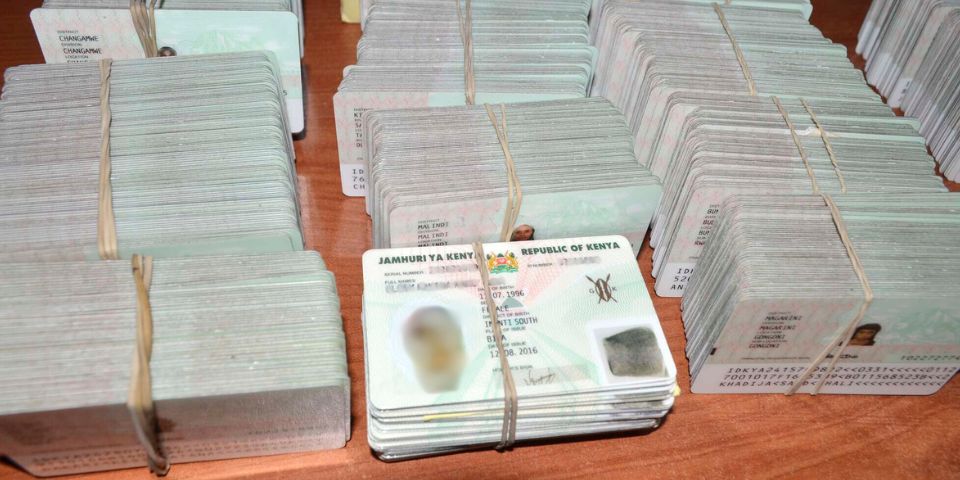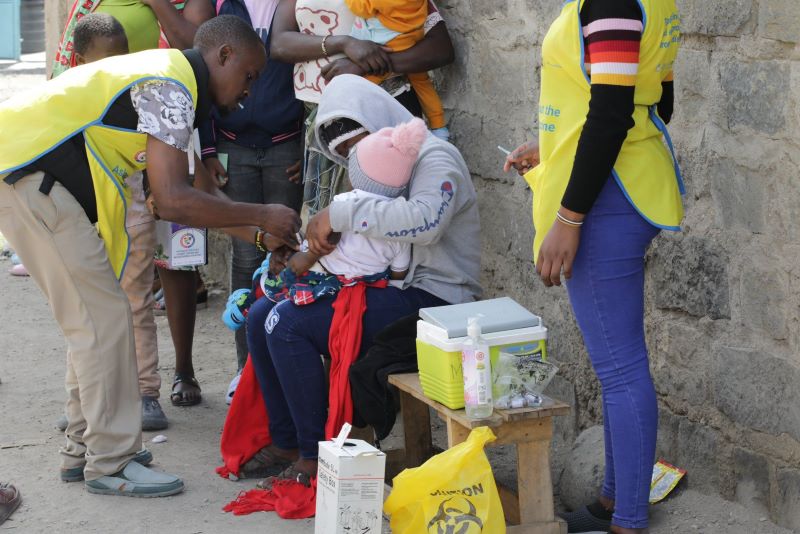Lamu records highest increase in ID card applications as border regions see surge

While the survey does not explicitly state the reasons for the fluctuations, a rise in new ID applicants is often associated with population growth, migration, government outreach initiatives, particularly in preparation for upcoming elections, or increased security requirements.
Trends in national identity card applications and issuance now show that Lamu County recorded the highest percentage increase in total applications made last year, as more border regions continue to experience a rise in the number of applicants.
According to the Kenya National Bureau of Statistics (KNBS) Economic Survey 2025, released this week, the number of Lamu residents applying for ID cards has grown exponentially since 2020. The county recorded 763 applications in 2020, followed by 3,429 (2021), 2,024 (2022), 2,249 (2023), and 3,373 (2024).
More To Read
- KNBS data shows uneven food price shifts as inflation dips slightly
- Government tightens ID registration checks after scrapping vetting process
- Huduma Kenya urges citizens to collect thousands of unclaimed documents
- How digital platforms are creating new pathways for youth, with riders taking home up to Sh70,000 monthly
- Busia destroys Sh21.9 million worth of heroin, bhang in anti-drug operation
- Africa lags in ID cards coverage as experts urge inclusive access
A similar steady increase was observed in Garissa County, where applications rose from 5,901 (2020) to 8,540 (2021), 8,587 (2022), 11,477 (2023) and 16,147 in 2024.
Marsabit County also experienced growth, with 4,564 applications in 2020, followed by 6,853 (2021), 7,874 (2022), 13,206 (2023) and 13,514 (2024).
In Wajir, the number of ID applicants rose from 8,022 in 2020 to 11,909 (2021), 9,780 (2022), 16,895 (2023) and 21,512 in 2024, while Mandera County registered 7,702 (2020), 10,672 (2021), 12,584 (2022), 19,285 (2023) and 20,337 (2024) applications respectively.
However, Kwale County saw a drop in applications last year, with 17,951 applicants in 2024 compared to 21,578 (2023), 23,005 (2022), 19,514 (2021) and 11,924 (2020).
A similar trend was observed in Isiolo County, where 4,831 people applied for ID cards in 2024, compared to 5,033 in 2023. The county had also recorded lower figures in previous years, with 3,385 (2022), 3,201 (2021) and 3,394 (2020) applications.
Turkana County recorded the highest decline in new ID card applications in 2024, with a 47.4 per cent drop. The county received 17,637 applications in 2024 compared to 33,528 in 2023. This came after years of steady growth: 10,165 (2020), 16,255 (2021) and 21,769 (2022).
Busia County also registered a decrease in 2024, with 22,726 applicants, down from 33,976 in 2023. Prior to that, the county had experienced consistent growth: 14,859 (2020), 30,334 (2021) and 33,684 (2022).
While the survey does not explicitly state the reasons for the fluctuations, a rise in new ID applicants is often associated with population growth, migration, government outreach initiatives, particularly in preparation for upcoming elections, or increased security requirements.
Last year, President William Ruto announced a ban on the vetting process for identity card applicants, effective from May 1.
The vetting procedure, introduced in the 1990s, was intended to distinguish Kenyan citizens from non-citizens in border areas. However, it was not a formal part of the ID application process and had become a source of alleged corruption, with some government officials accused of soliciting bribes from applicants.
The practice led to complaints of discrimination from affected communities, with applicants facing prolonged delays as officials investigated their citizenship. This process was widely criticised for depriving individuals of educational and economic opportunities due to extended waiting periods.
Top Stories Today















































